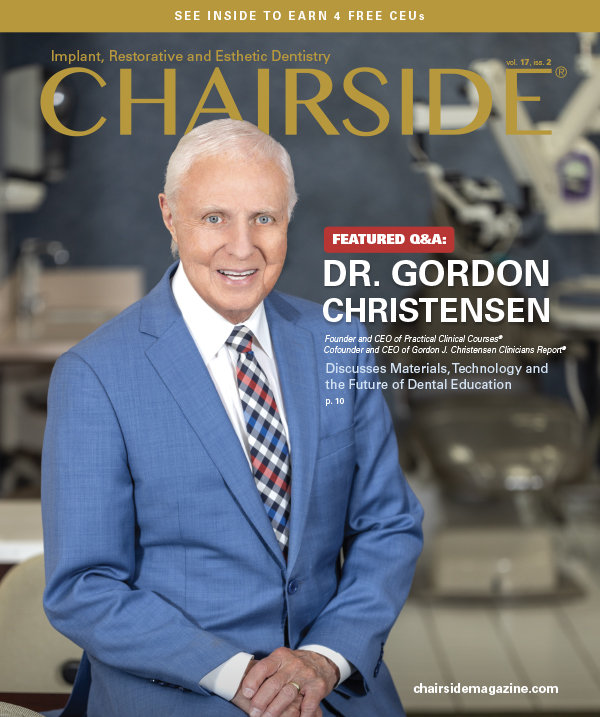Immediate Placement and Provisionalization in the Anterior: The Guided Approach
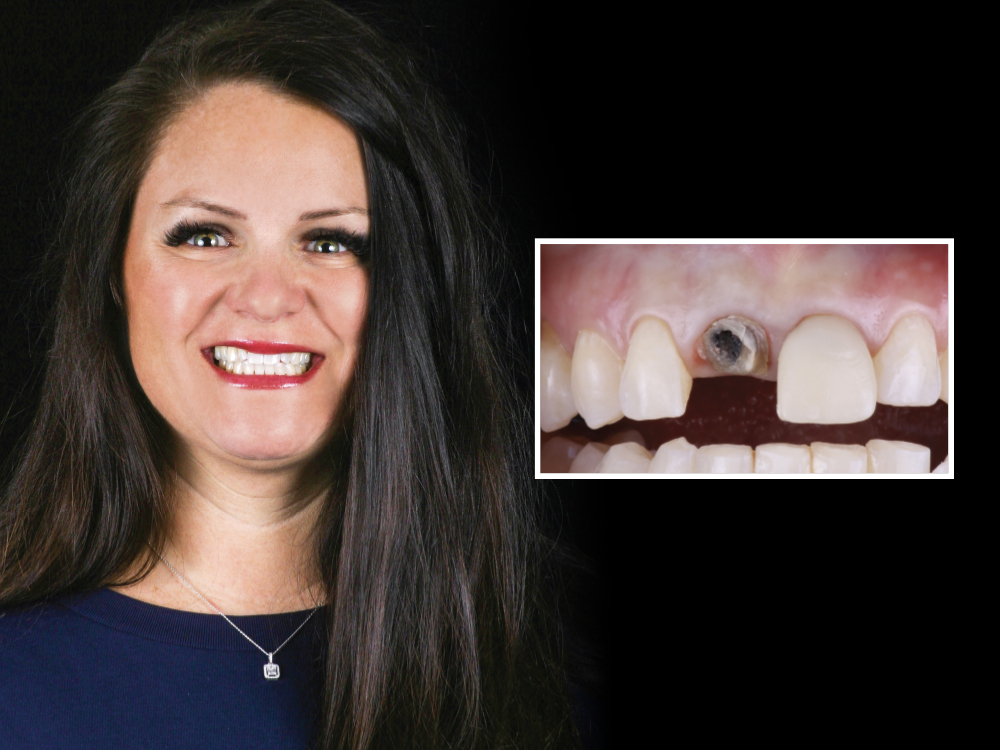
Implant treatment in the anterior presents unique challenges. Fortunately, we now have affordable and accessible tools to help clinicians address these challenges with confidence, including digital treatment planning (DTP) technology, surgical guides, CAD/CAM fabricated provisional crowns, and precise-fitting restorations that can match the esthetics of natural teeth.
For implants in the esthetic zone, a guided surgical approach is nearly always the best choice. Patient demands are high in the anterior, leaving very little room for surgical error. The optimal result can be obtained by beginning implant treatment with the end result in mind — an endeavor that is simplified with guided surgery to ensure that the implant is placed in the ideal prosthetic position. A digital treatment plan can be created that not only avoids surprises on the day of surgery but also includes a provisional crown for immediate delivery, providing the fixed temporary that patients desire while sculpting the soft tissue for a lifelike restoration.
Working with the DTP team at Glidewell, you can get a Hahn™ Tapered Implant (Glidewell Direct; Irvine, Calif.), a digital treatment plan, a surgical guide, an immediate provisional crown and the restorative services you need from a single provider, ensuring a cohesive, prosthetically driven approach to treatment at every step. The following case report highlights the benefits of guided surgery and immediate provisionalization, which were essential in efficiently providing the patient with a beautiful, predictable restorative outcome.
CASE REPORT
A longstanding female patient presented with an endodontically treated tooth that had failed over time. The post and crown had come off, and she came to the appointment with the tooth in her hand. Due to extensive decay, the prognosis for further restorative treatment was not favorable. Because of the site’s location in the anterior and limited bone volume, I opted for a guided surgical approach to ensure the best possible esthetic outcome. We decided to extract the tooth and place the implant in the same appointment, and having a provisional crown fabricated in tandem with the digital treatment plan allowed for a precise-fitting temporary restoration that could be delivered immediately. The immediate provisional would help maintain the natural position of the soft tissue and serve as the basis for the final restoration.
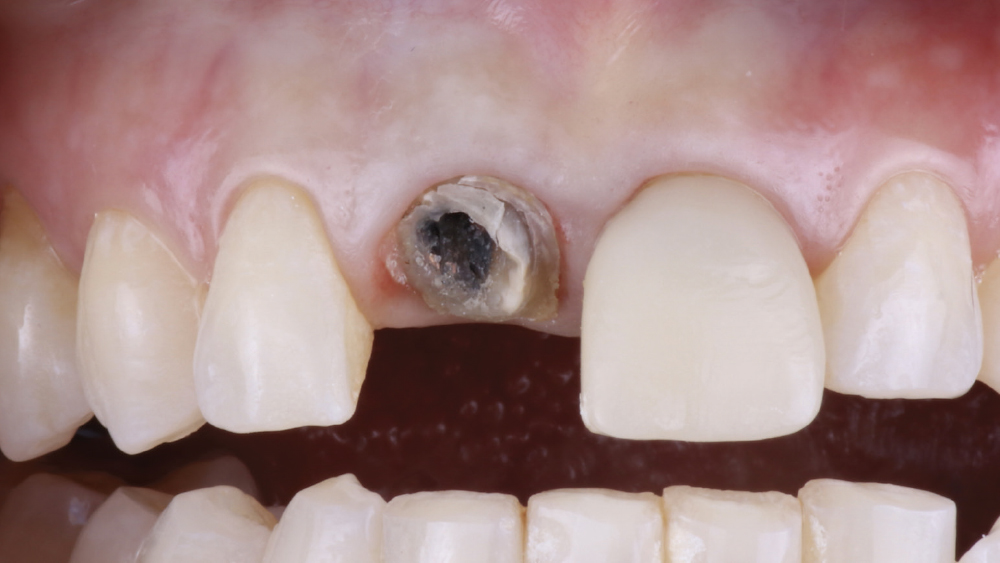
Figure 1: The patient sought treatment for her right maxillary central incisor after the post and crown had dislodged from the tooth, which had extensive recurrent decay. Implant treatment offered the best long-term prognosis. She didn’t want to walk around with a gap in her smile and preferred to avoid wearing a removable appliance or having the adjacent teeth cut down to support a 3-unit bridge. Extraction with immediate implant placement and provisionalization offered the most efficient means of tooth replacement, so CBCT scans were taken to determine the feasibility of this approach.
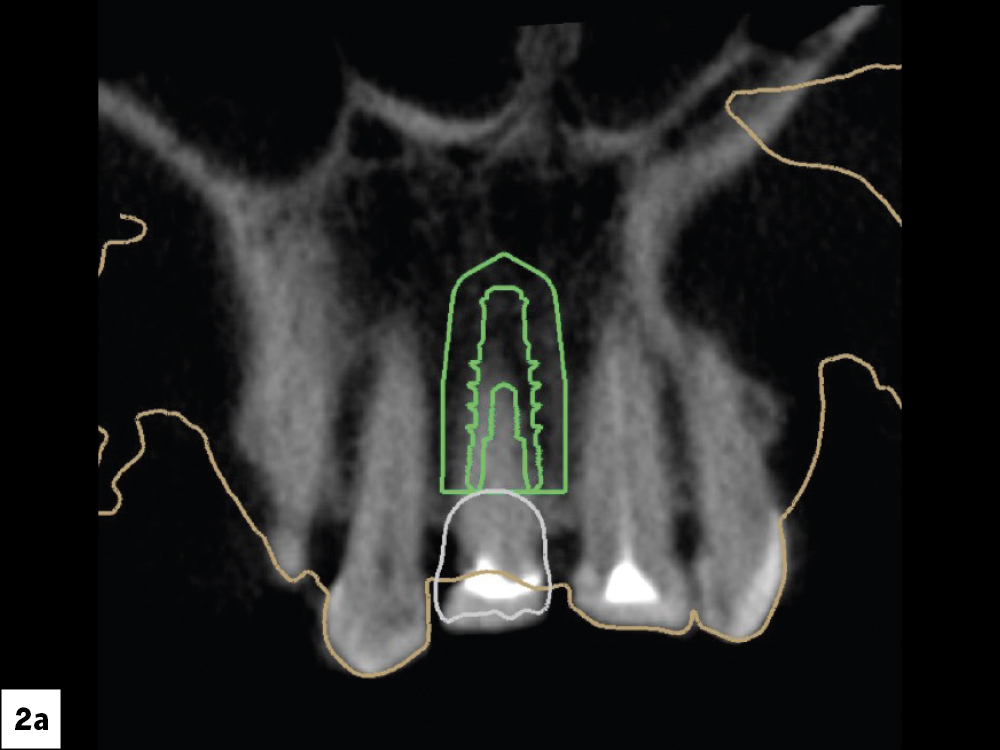
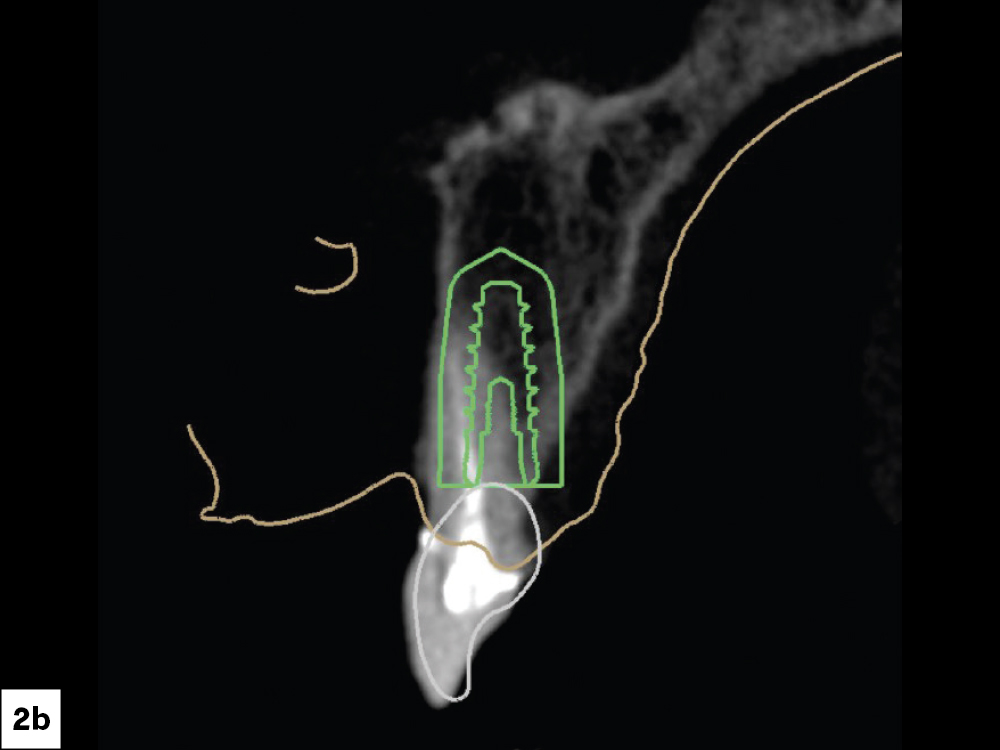
Figures 2a, 2b: CBCT scans illustrate the root of tooth #8, the volume of bone and the amount of space between the fractured tooth, the contralateral incisor and the adjacent lateral incisor. The CBCT scans were sent to Glidewell for the creation of a digital treatment plan and surgical guide. Guided surgery is the most predictable and accurate means of implant placement and allows for positioning that supports an optimal emergence profile, making it ideal for anterior cases with high esthetic value, where there is no room for error. A provisional crown was designed as part of the digital treatment plan to preserve the soft tissue drape and interdental papillae during healing.
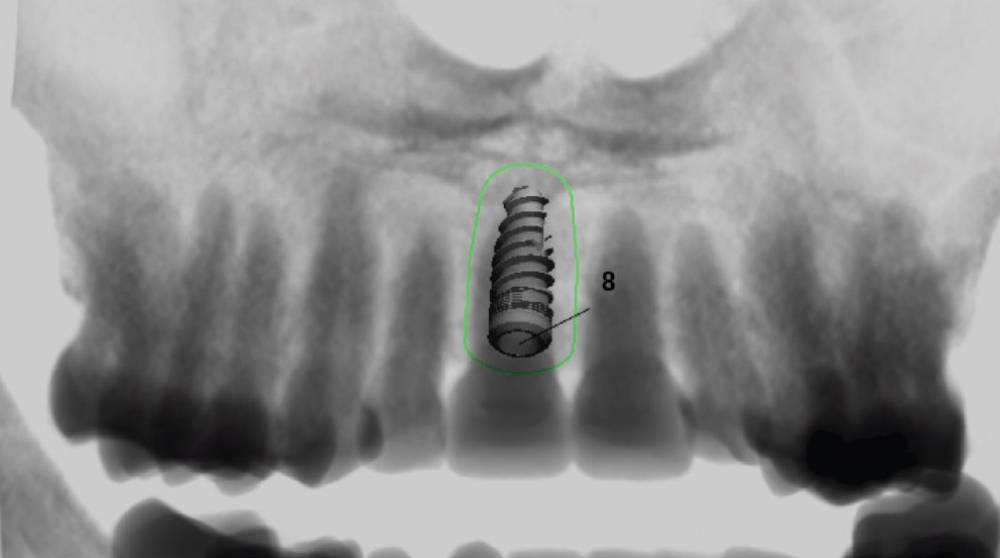
Figure 3: The Glidewell DTP team evaluated the CBCT scans to determine the optimal implant diameter, length, depth and position relative to the cementoenamel junction (CEJ) of the adjacent teeth. The remaining tooth structure was removed virtually using the treatment planning software, and a provisional crown was designed to support the soft tissue while remaining out of occlusion. Following my approval of the surgical plan, a surgical guide was fabricated to ensure implant positioning in the precise location determined by the digital treatment plan.
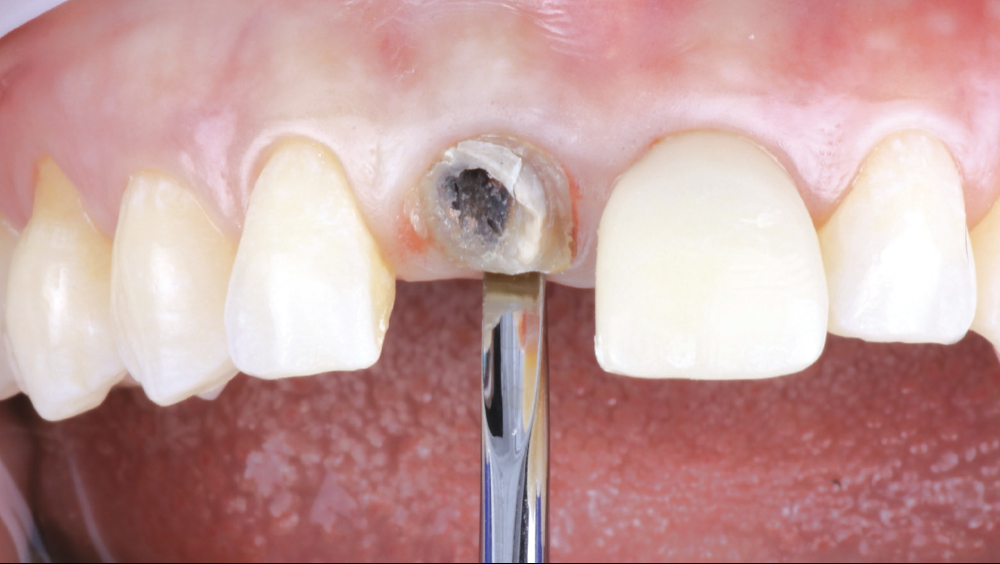
Figure 4: To begin the extraction process, periotomes were used to create space between the root and boney plates of the socket site. This allowed for gentle removal of the tooth while preserving the buccal plate.
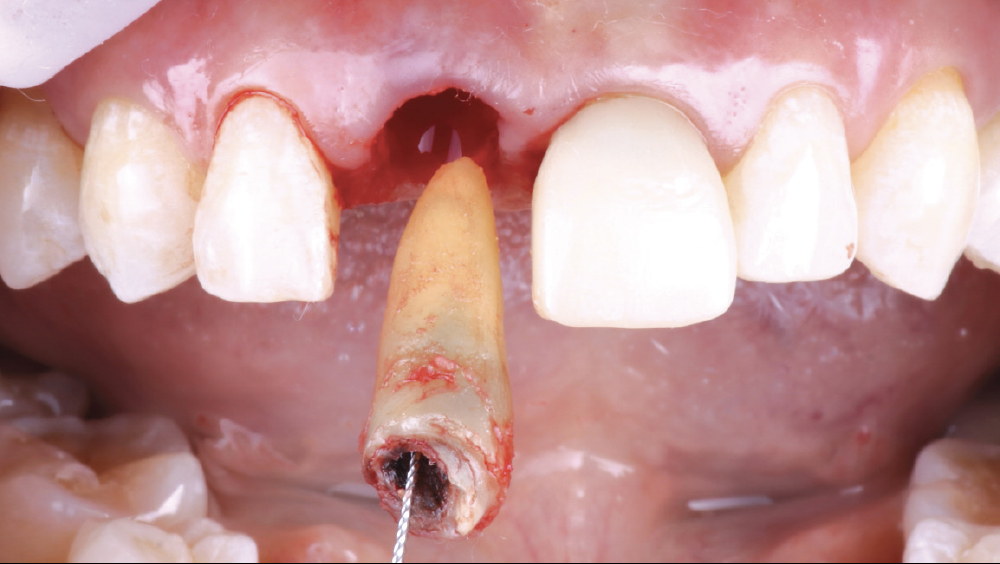
Figure 5: The entire root of the tooth was successfully extracted without causing damage to the socket, allowing for immediate implant placement, which offers several advantages for a case like this compared to the “graft and wait” approach. Only one surgical procedure is needed, the bone graft and implant heal concurrently, and delivery of an immediate crown allows for the maintenance of the gingival contours at the implant site.
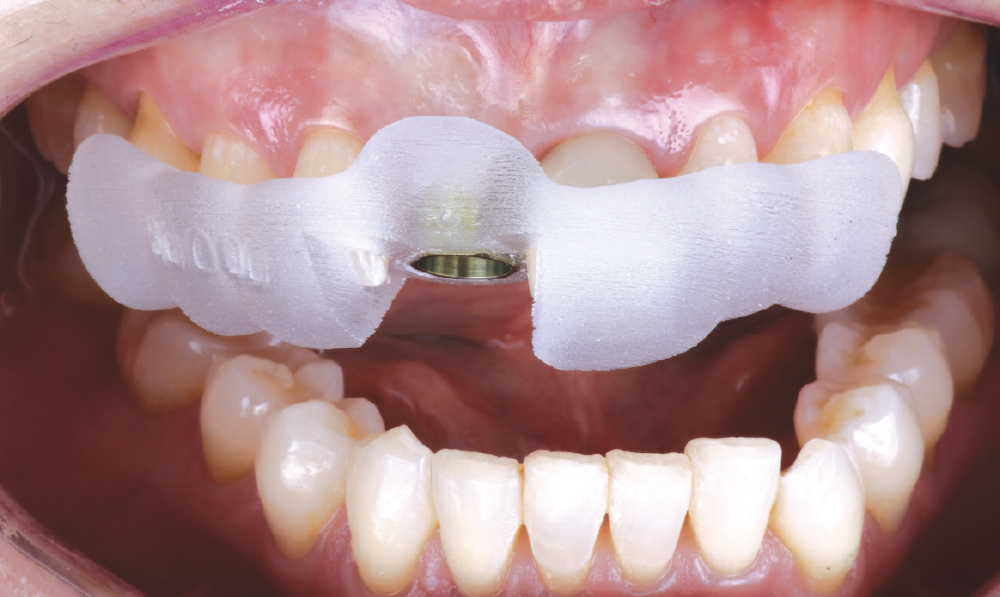
Figure 6: Next, the surgical guide was seated to ensure a precise fit. Note that the right lateral incisor is emerging through the small opening in the surgical guide, confirming complete seating of the guide. The surgical plan outlined exactly which drills to use during the surgical procedure, as well as the diameter and length of the Hahn Tapered Implant.
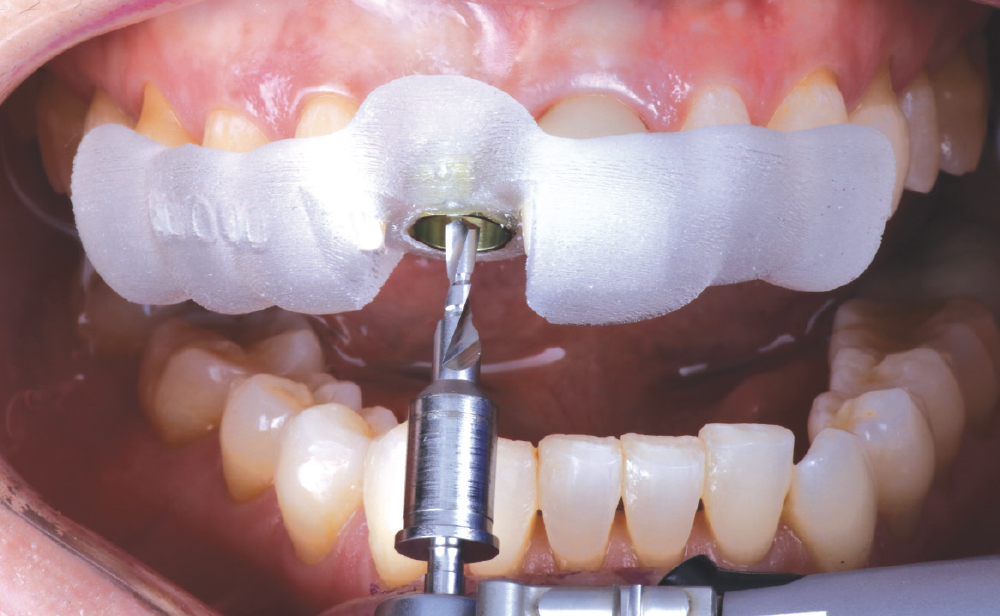
Figure 7: Because this was an extraction with immediate placement case, we proceeded immediately to the pilot drill, with the length predetermined by the DTP team at Glidewell. One advantage of the Hahn Guided Surgical Kit is that there is no need for drill keys or spoons. Additionally, there are drilling protocols for all bone densities, which can be used in accordance with the surgical plan proposed by the DTP team.
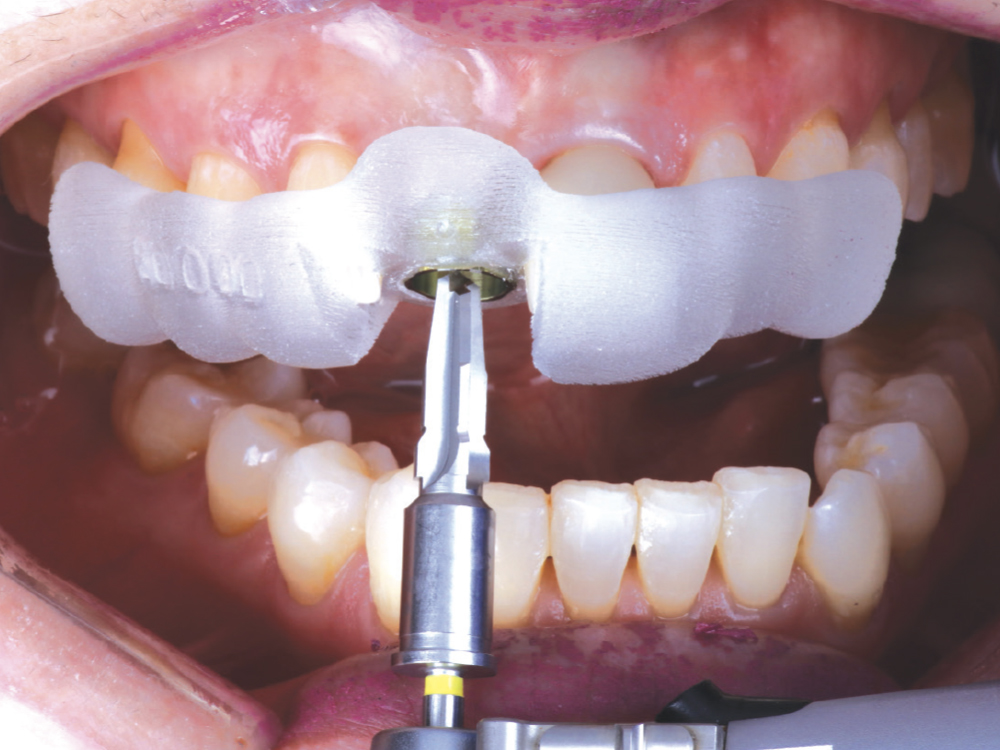
Figure 8: Here, the final shaping drill is used to complete the osteotomy for the 4.3 mm Hahn Tapered Implant. This last drill in the sequence marked the end to a very straightforward surgical protocol, where each step is mapped out clearly, is easy to follow and results in implant positioning in the precise location agreed to in the surgical plan.
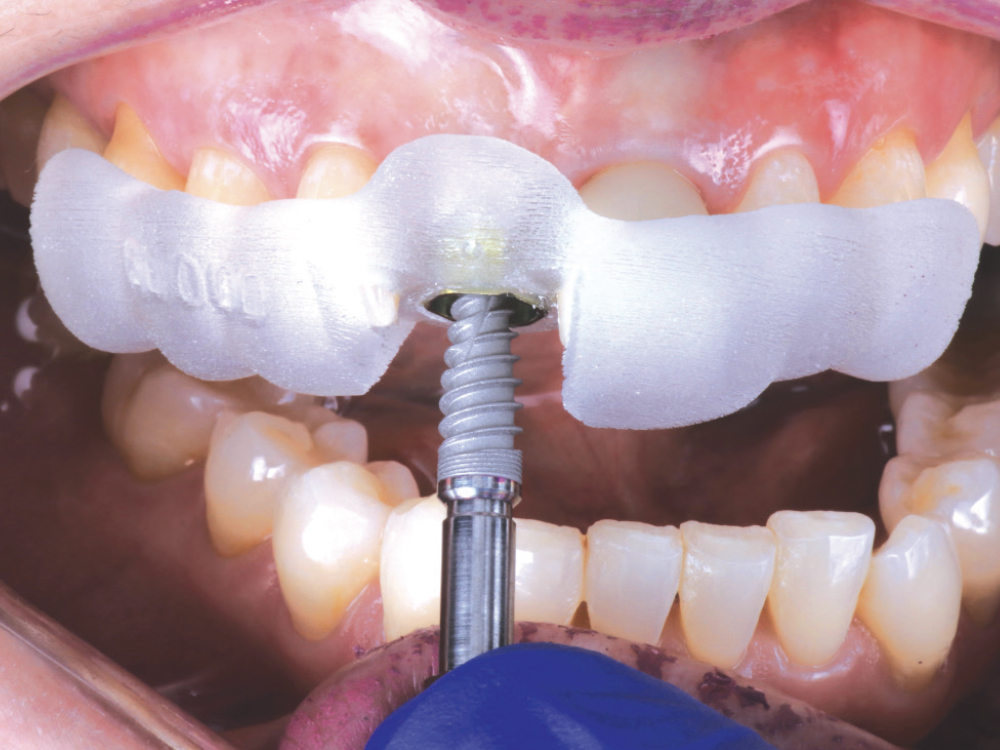
Figure 9: The Hahn implant was inserted into the site through the titanium sleeve of the surgical guide via the guided mount. The implant was tightened into final position with the ratchet wrench until the hex of the implant platform aligned with the hex of the titanium sleeve. Due to the precision of the digital treatment plan and guided surgical procedure, the implant was positioned 2 mm from the buccal plate and 2 mm below the CEJ of the adjacent teeth, in the exact location needed for the access hole of the planned screw-retained restoration to exit through the lingual surface.
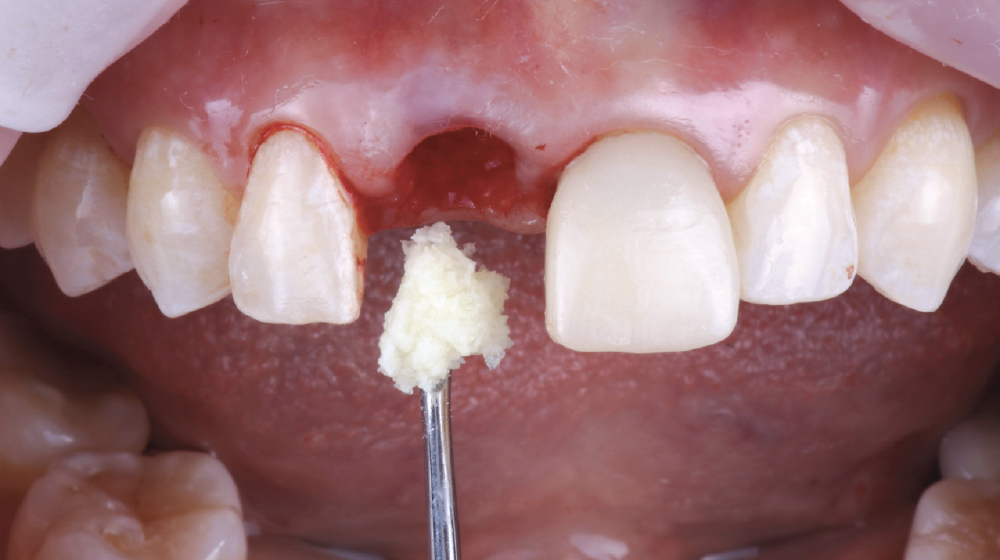
Figure 10: After placing the cover screw into the implant, Newport Biologics™ Mineralized Cortico/Cancellous Allograft blend (Glidewell Direct) was hydrated with sterile saline and inserted between the implant and buccal plate to graft the gap.
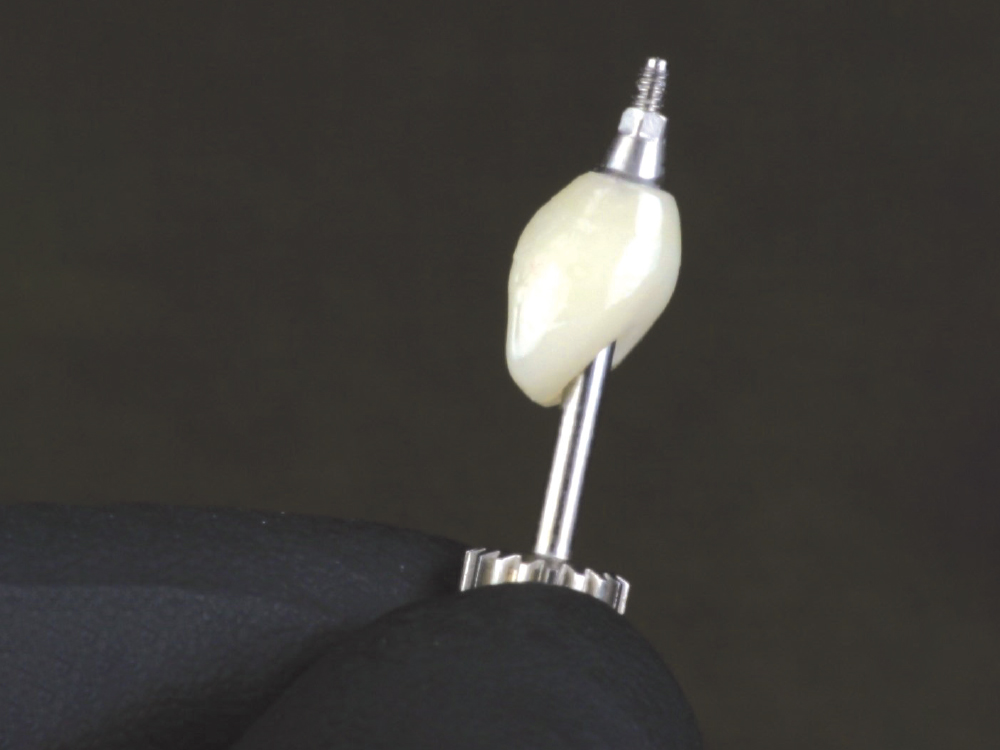
Figure 11: The Hahn Guided Surgery bundle included a customized BioTemps® screw-retained crown for delivery at the surgical appointment. The aggressive threads of the Hahn Tapered Implant helped achieve the high initial stability needed to deliver the immediate provisional crown. Further, the machined collar of the implant is tissue- and bone-friendly to promote healing and long-term health of the implant site. BioTemps Provisionals typically drop right in without chairside adjustments, streamlining the immediate provisionalization procedure.
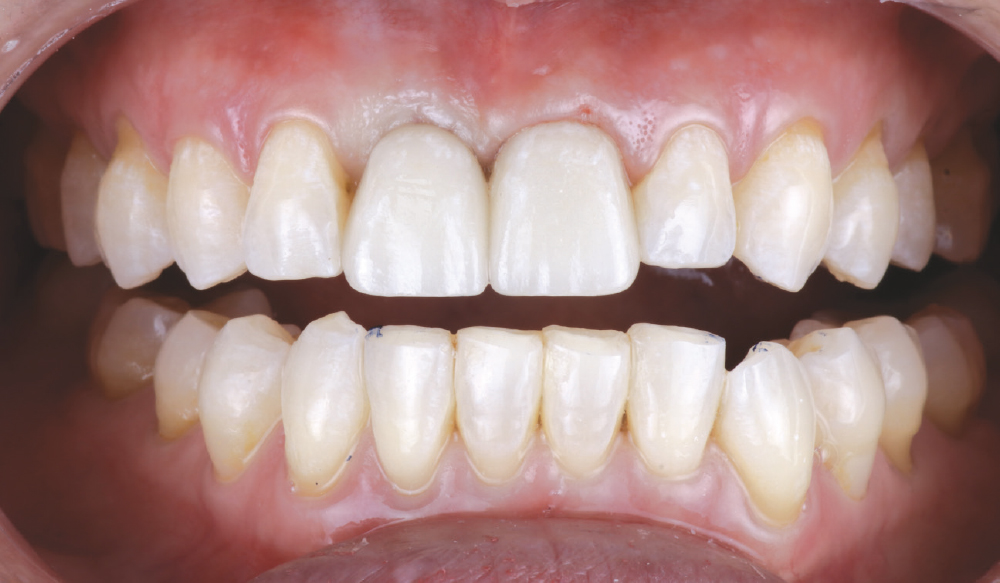
Figure 12: The immediate BioTemps crown was lifelike and met the patient’s desire to avoid wearing a flipper during healing. Most patients would choose a fixed temporary if given the option, and the DTP team at Glidewell offers a patient-specific provisional crown for a small fee, which makes immediate provisionalization an easy choice.
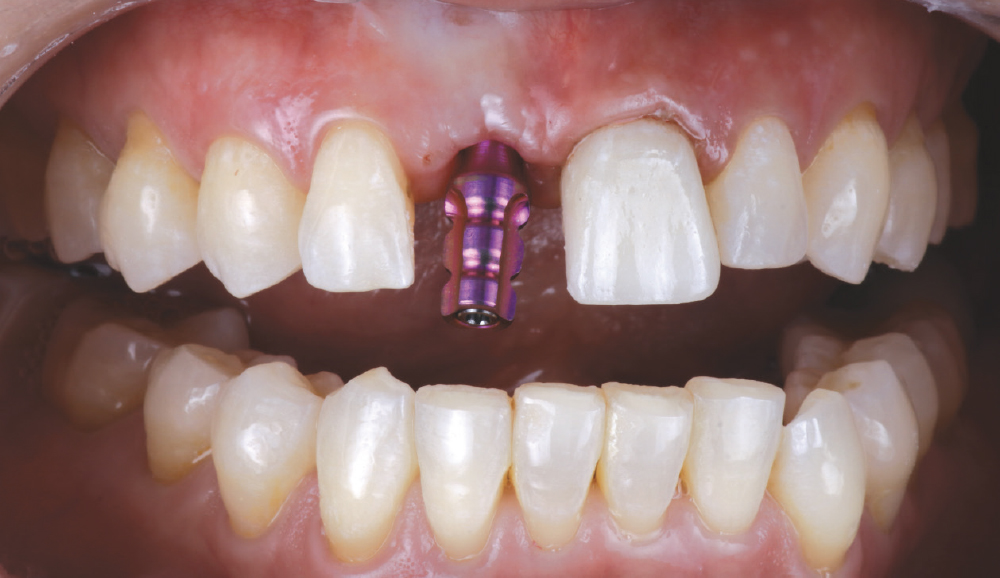
Figure 13: After five months of healing, a closed-tray transfer coping was connected to the implant, and the final impression was made and sent to the lab for fabrication of the final restoration.
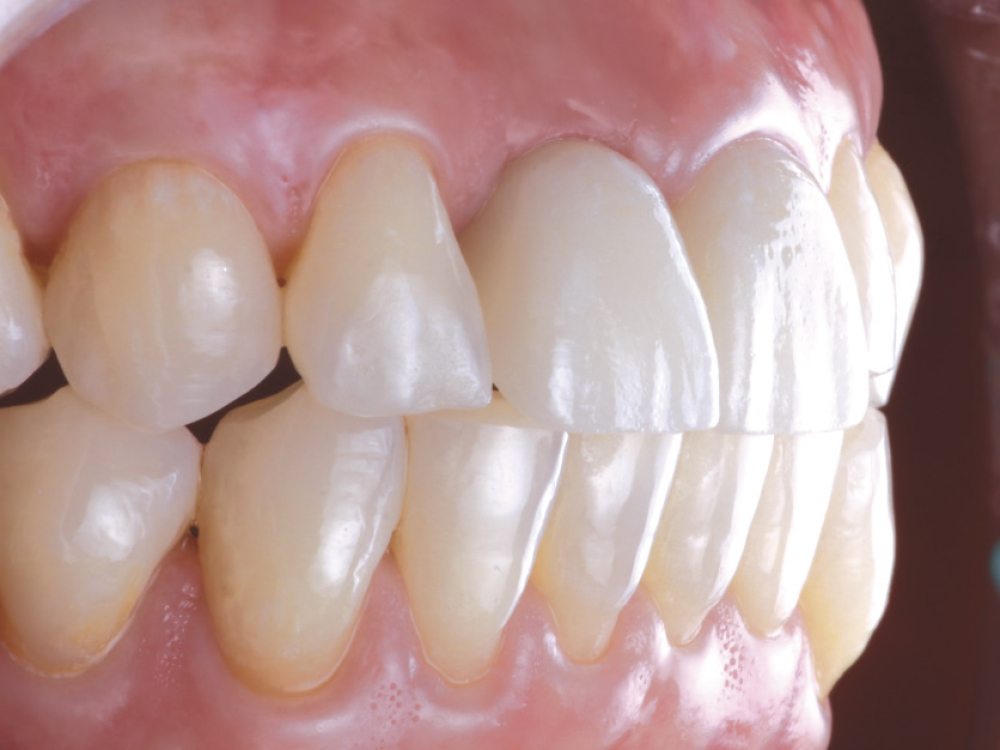
Figure 14: The BruxZir® Esthetic screw-retained crown was delivered, providing a highly predictable outcome for a case in the esthetic zone. The BioTemps crown maintained tissue support throughout the healing process, resulting in an optimal emergence profile that exceeded the expectations of the patient.
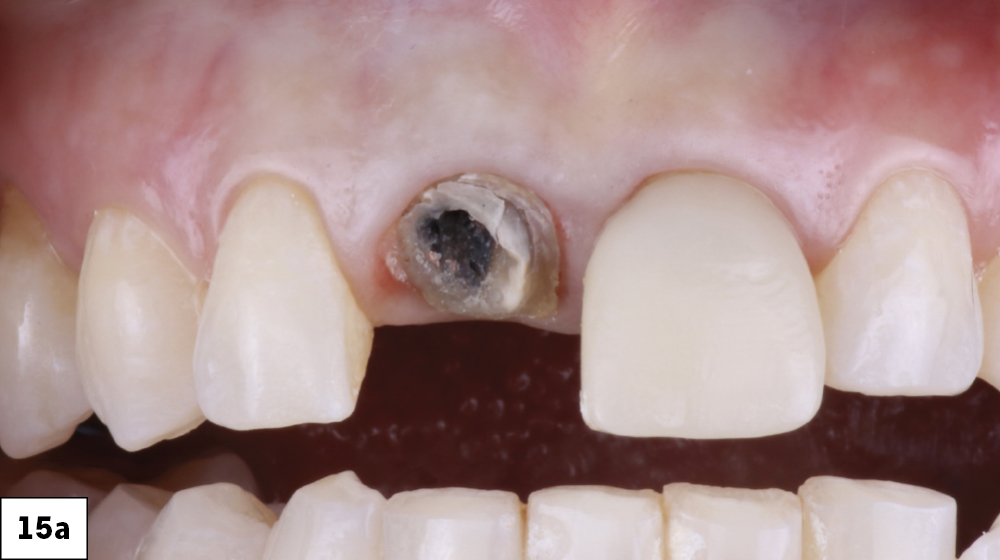
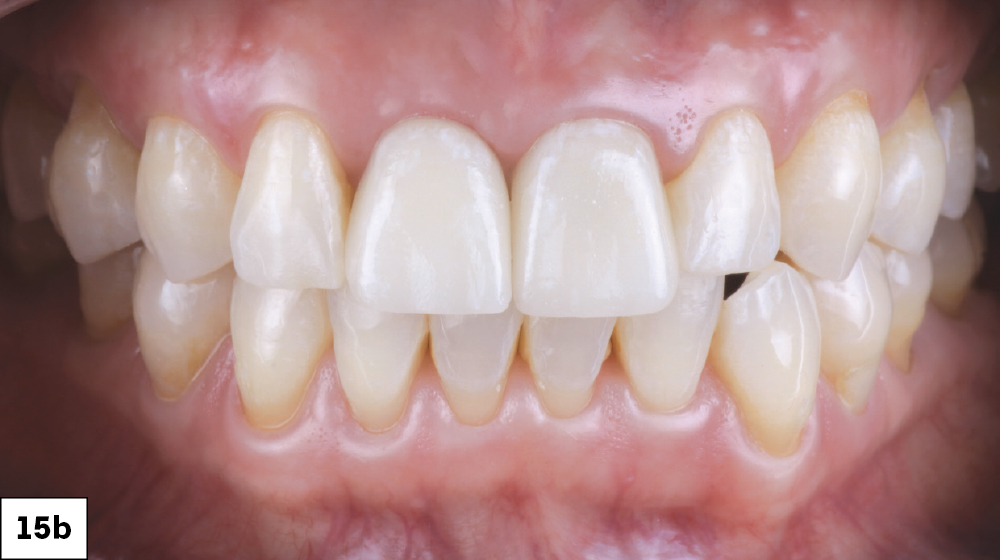
Figures 15a, 15b: “Before and after” images illustrate the dramatic transformation resulting from the guided surgical approach to implant treatment. All of the surgical and restorative resources for this case were obtained through Glidewell at an affordable price with Hahn Guided Surgery bundle pricing and the 20% discount available for Hahn cases restored through the implant lab at Glidewell.
CONCLUSION
Thanks to digital innovations and the simple, accessible surgical solutions available to dentists, implant placement has become an increasingly common and important part of the general practice. Even advanced procedures like immediate implant placement and provisionalization in the anterior can be performed with confidence by using proven tools and technologies that avoid surprises and complications. Most importantly, more patients than ever can receive the care they need in a convenient, efficient, predictable manner.
To learn more about implant placement, take a free on-demand CE course at glidewell.com/FreeCE.

